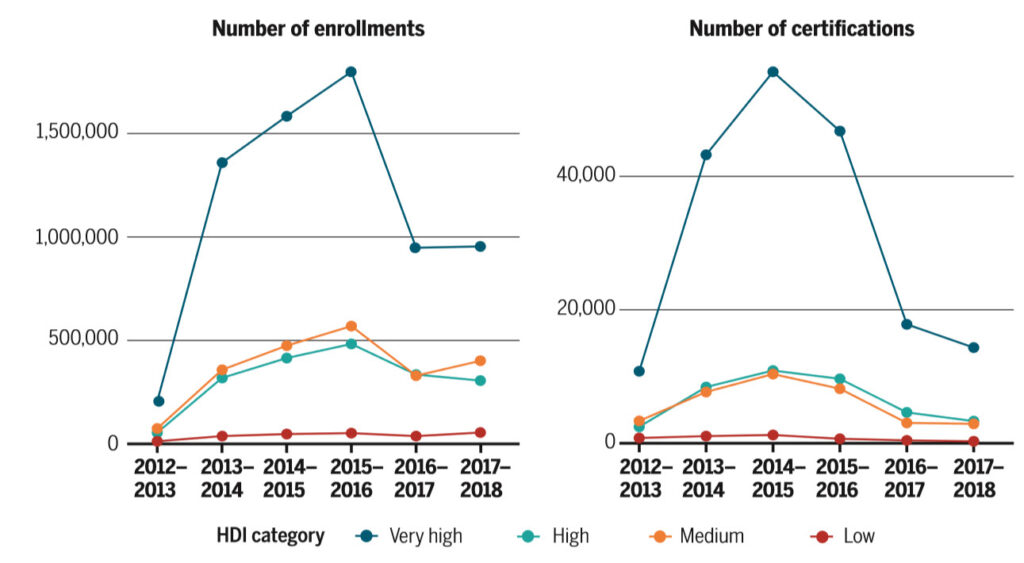Positions for someone with a Masters degree in Data Science are $300K and up, according to a friend of a friend of mine who works in Human Resources for a well-known company. The company’s data scientists, who work on algorithms to predict usage based on data collected from the product’s platforms, are continually lured away from them by Netflix, who is willing to pay more.
According to the Rochester Institute of technology, “The demand for targeted expertise in data analytics and management continues to rise. Job openings in data science are projected to grow by 15% by 2020.”
Data science is so new and sparsely populated with programmers that companies are stealing talent from each other by offering higher salaries. Data science is more than manipulating big data; artificial intelligence is a sub-category.
But who has the money to pay tuition for learning such a coveted skill set?
You can get a professional certificate with online courses offered and certified by Microsoft, Harvard, University of California San Diego and Berkeley, IBM, and Columbia University for less than $1000 with a Massive Open Online Course (MOOC). Many courses are self-paced. All the classes are free if you don’t need the certificate by proving your skill set at the interview, right?
Who is to say that an expensive Master’s degree is required for a job in data science or artificial intelligence when the talent pool is so shallow? Another option on edx.org is to earn a ”Micro Masters. ” If one has completed and successfully earned a verified certificate in a Micro Masters program, some colleges will accept that as credit toward a full Master of Science degree, including that in data science. For instance, the Rochester Institute of Technology (RIT) offers a path to receive credit for RIT’s Master’s degree from those who hold a University of California San Diego Data Science Micro Masters program certificate that was earned using the edx.org online platform.
The field of artificial intelligence is more accessible than ever since for less than $100 you can purchase in Intel Neural Compute Stick and create your own artificial intelligence applications. Many of the courses on edx.org are taught in five languages. (At present, five or fewer courses on edx.org are taught in Japanese, Russian, Dutch, or chickadees, Turkish, German, and Arabic.)
Which class, out of thousands of free courses to choose from?
A few years ago, I took a MOOC on technical writing. The course was not just informative, but engaging, realistic, and forever changed my perception of what writing was for in the first place. Other MOOC platforms are Coursera.org, openclassrooms.com, FutureLearn.com, Udacity, and Canvas Network. The biggest challenge is deciding which ladder you wish to climb: data science, Linux administration, artificial intelligence, robotics, Android/iOS programming, and many more. As of this writing, edx.org has 63 electronics courses, 609 computer science courses, 241 data analysis and statistics courses, 23 courses in Cybersecurity, and 356 engineering courses online.
The term MOOC was coined in 2008. By 2012, the concept had taken off, and MOOCs were considered a disruptive transformation in higher education. Several universities were uploading courses to online MOOC platforms. (The earliest MOOC platforms were edx.org, coursera.org, and canvas.net).
Sadly, MOOC courses often get abandoned after a few classes, and the number of certifications has decreased, with a disproportionate number of participants from affluent countries. (See Figure 1.)

[i]Reich, Justin, and Jose Ruipérez-Valiente. “The MOOC Picot.” Science Magazine, vol. 363, no. 6423, 11 Jan 2019, pp. 130-131. Sciencemag.org

Leave a Reply